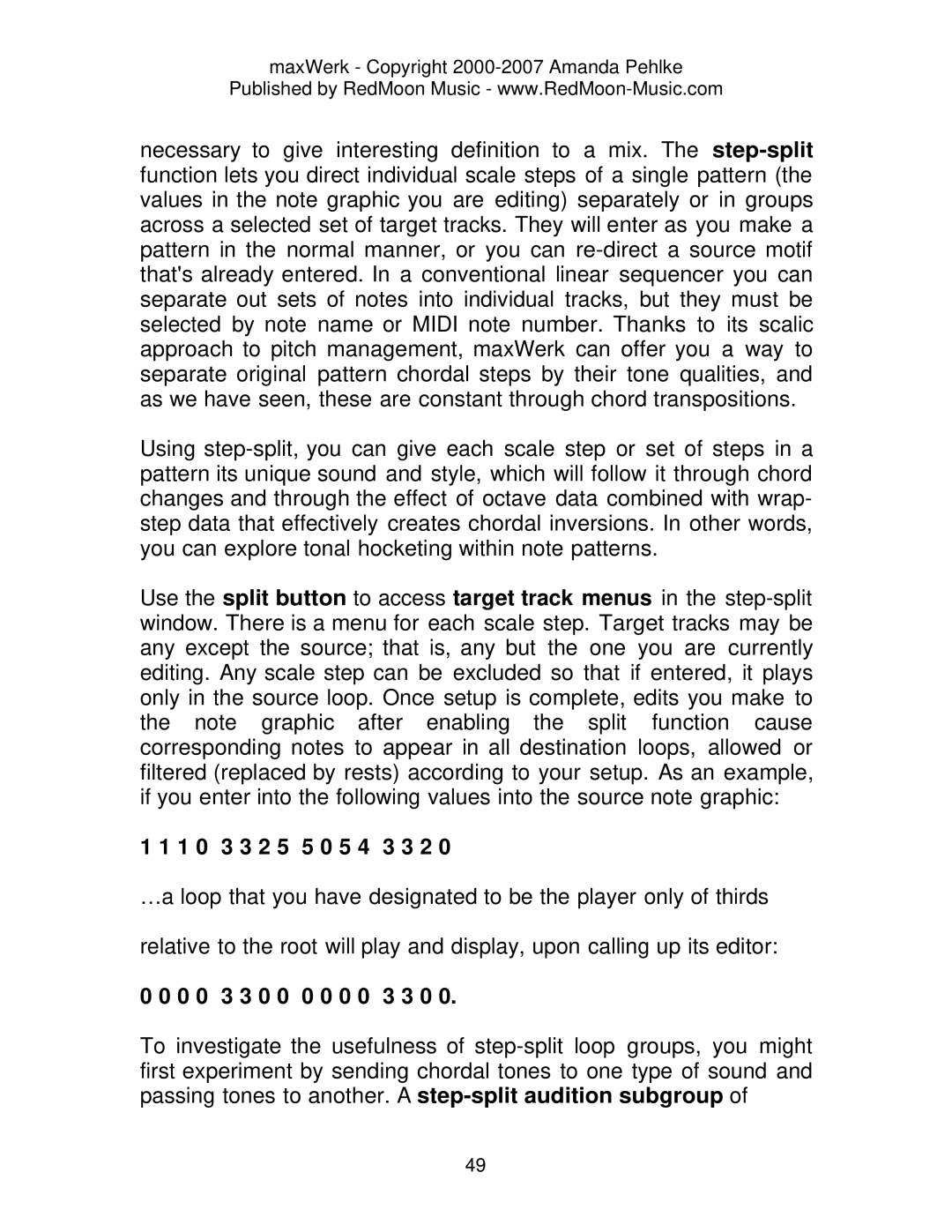maxWerk - Copyright 2000-2007 Amanda Pehlke
Published by RedMoon Music - www.RedMoon-Music.com
necessary to give interesting definition to a mix. The step-splitfunction lets you direct individual scale steps of a single pattern (the values in the note graphic you are editing) separately or in groups across a selected set of target tracks. They will enter as you make a pattern in the normal manner, or you can re-direct a source motif that's already entered. In a conventional linear sequencer you can separate out sets of notes into individual tracks, but they must be selected by note name or MIDI note number. Thanks to its scalic approach to pitch management, maxWerk can offer you a way to separate original pattern chordal steps by their tone qualities, and as we have seen, these are constant through chord transpositions.
Using step-split, you can give each scale step or set of steps in a pattern its unique sound and style, which will follow it through chord changes and through the effect of octave data combined with wrap- step data that effectively creates chordal inversions. In other words, you can explore tonal hocketing within note patterns.
Use the split button to access target track menus in the step-split window. There is a menu for each scale step. Target tracks may be any except the source; that is, any but the one you are currently editing. Any scale step can be excluded so that if entered, it plays only in the source loop. Once setup is complete, edits you make to the note graphic after enabling the split function cause corresponding notes to appear in all destination loops, allowed or filtered (replaced by rests) according to your setup. As an example, if you enter into the following values into the source note graphic:
1 1 1 0 3 3 2 5 5 0 5 4 3 3 2 0
…a loop that you have designated to be the player only of thirds
relative to the root will play and display, upon calling up its editor:
0 0 0 0 3 3 0 0 0 0 0 0 3 3 0 0.
To investigate the usefulness of step-split loop groups, you might first experiment by sending chordal tones to one type of sound and passing tones to another. A step-split audition subgroup of
